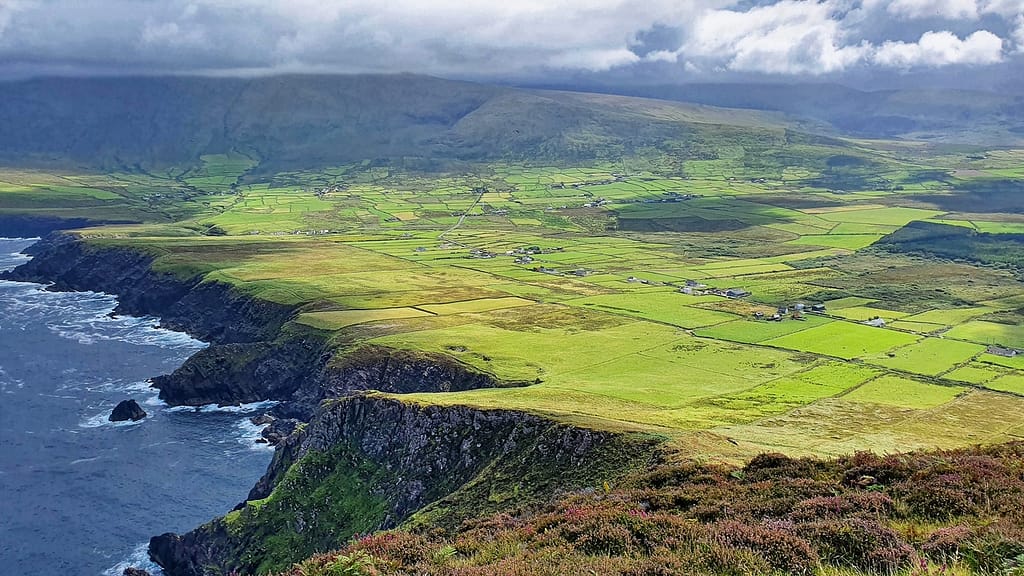The Extraordinary County Kerry
County Kerry is so beautiful it takes your breath away.
Just a few of its wonders include mountains, fields and bogs cloaked in shades of green too numerous to count. Ancient standing stones, holy wells and mists that call to other worlds and times. And the ever-present sea, whose tides continue to ebb and flow according to the phases of the moon and the turning wheel of the year.
Overview
The county is located in the province of Munster in southwestern Ireland. County Limerick borders it to the east, County Cork borders it to the southeast, and the Shannon River borders it to the north. The Atlantic Ocean borders the rest of the county.
Three major peninsulas dominate the coastline: Dingle, Iveragh and Beara. Each of the peninsulas, in turn, has numerous bays and inlets edged with glorious stretches of sand. There are also many islands–both large and small.

The Blasket Islands and the Skelligs
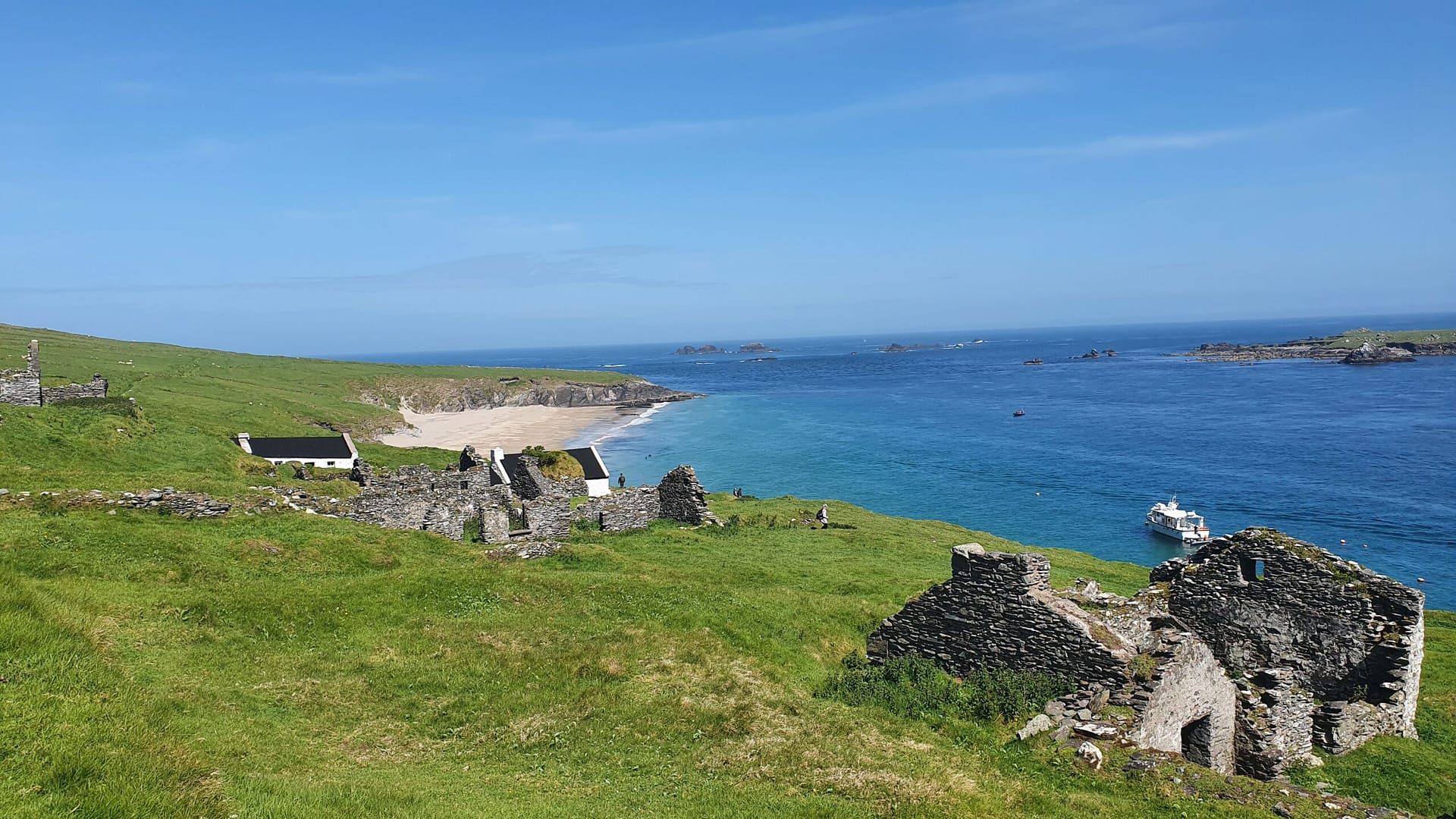
Two of the most important island groups are the Blasket Islands and the Skellig Islands.
The Blasket Islands consist of an archipelago of islands that lie off the coast of the Dingle Peninsula near the town of Dunquin. People lived on them from at least the 13th century until the middle of the 20th century. At its height, the population consisted of 175 completely Irish-speaking people. By the early 1950s, however, the population had declined to 22. Due to increasingly harsh living circumstances and a lack of emergency services, the government evacuated the remaining residents to the mainland in 1953.
People remember the islanders and their unique culture thanks to the storytelling skills of Blasket Island authors like Muiris Ó Súilleabháin and Peig Sayers.
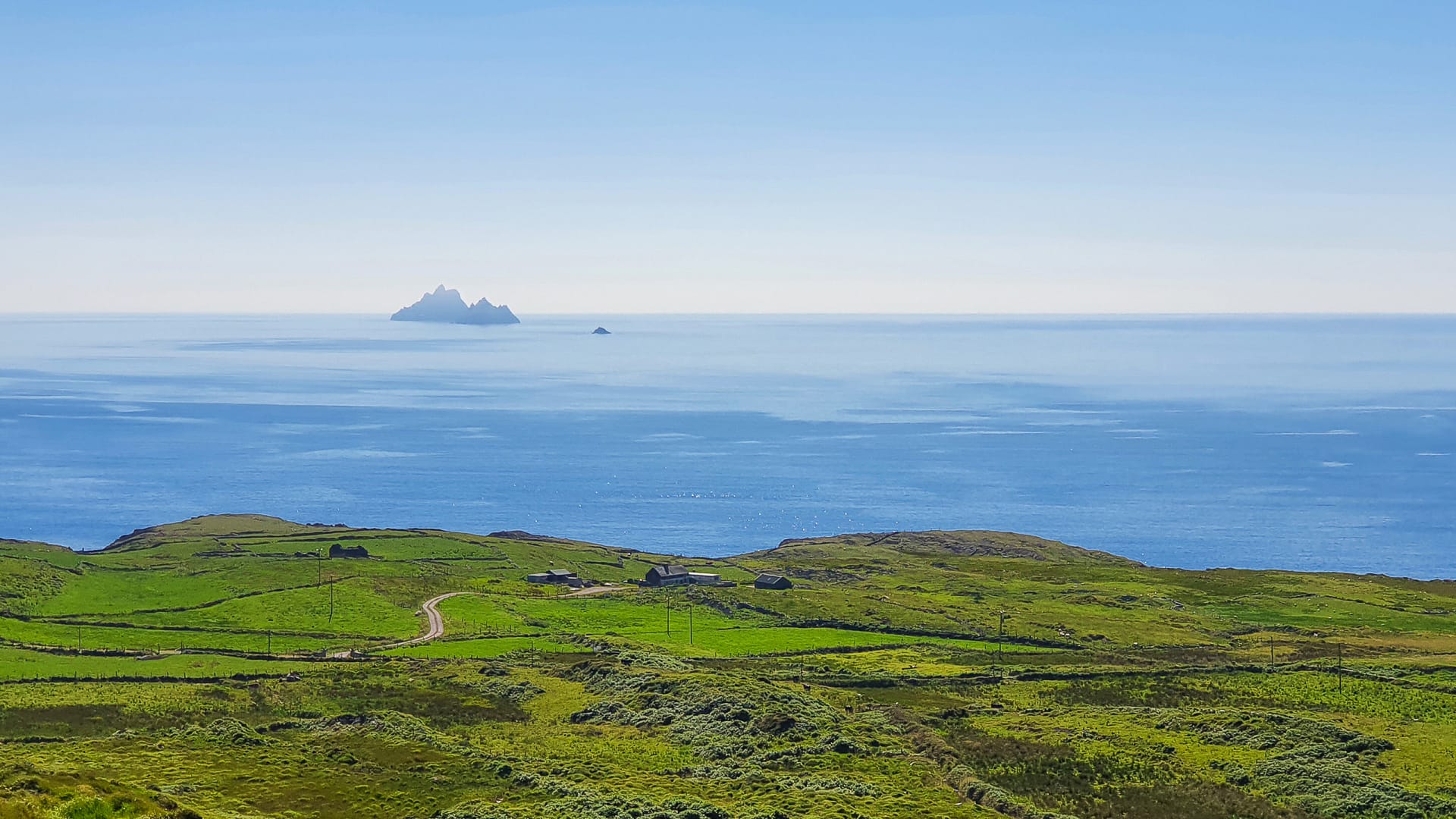
Skellig Michael lies off the coast of the Iveragh Peninsula near the town of Portmagee. It consists of a rock that towers 714 ft. (218 metres) above sea level. At its top is a well-preserved monastic settlement dating from the 6th century. (Thanks to its “other-worldly” appearance, the directors of two Star Wars movies filmed scenes on Skellig Michael in 2014 and 2015.)
Skellig Michael’s neighbor–Little Skellig–is too small and inhospitable to support human life. Instead, it provides a home for around 30,000 pairs of gannets. This makes it the second largest gannet colony in the world. (The largest is on Bass Rock in Scotland’s Firth of Forth.)
The Interior
The interior of County Kerry consists of numerous mountains, sheltered valleys and bogs. Ancient stone walls and thick hedges of hawthorn, elder, blackberry and holly divide farmers’ fields into small plots. Lakes and rivers abound, and they are so clear that you can easily see the stones and fish in their depths. Sheep, of course, graze peacefully across the entire landscape.
Thankfully, many places remain that are free of roads–even footpaths. Traversing them requires permission from the landowner, sturdy shoes, strong lungs, and a good map and compass. It also requires the ability to clamber up and down steep mountains covered with countless rocks and boulders and to make your way across mushy, rush-covered bogs and fast-flowing streams.
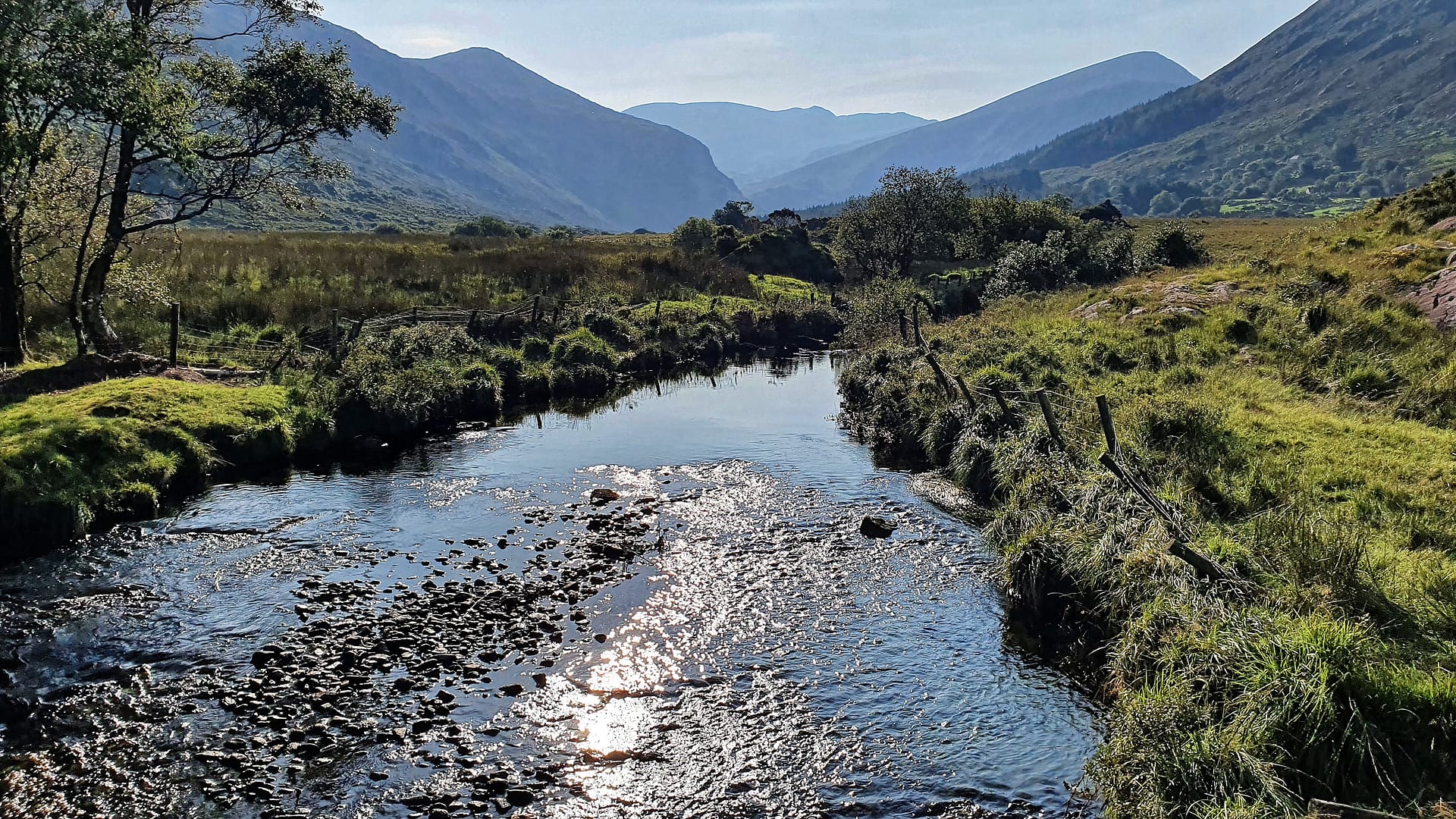
Ancient Traces
People have been living in County Kerry for at least 6,500 years. As different waves of people arrived, they left evidence of their beliefs and culture behind. Today you can see passage tombs dug into the hillsides, stone circles, stone forts, ogham stones and holy wells. You can also see early Christian monastic settlements, medieval castles, grand manor houses and more.
Although there are numerous opportunities for visitors to see such treasures at well-maintained facilities, many occur on private land, in the middle of farmers’ fields or isolated valleys. Such intermingling of ancient and modern is a wonder for Americans like me who are thrilled by buildings from the 1800s! Yet it is a daily occurrence for the Irish.
A Place of Superlatives
The awe-inspiring County Kerry is a place of superlatives. The Iveragh Peninsula is home to the MacGillycuddy’s Reeks range, which contains the three highest mountains in Ireland: Carrauntoohil (3,409 feet), Beenkeragh (3,313 feet), and Caher (3,284 feet). Conor Pass, which connects the town of Dingle with the village of Cloghane and Brandon Bay, is the highest mountain pass in Ireland.
Dunquin is the most westerly inhabited area of Ireland. Dunmore Head is the most westerly tip of Europe. (Both are on the Dingle Peninsula.) Best of all–at least as far as many of the locals are concerned–Kerry has the most successful Gaelic football team in Ireland!
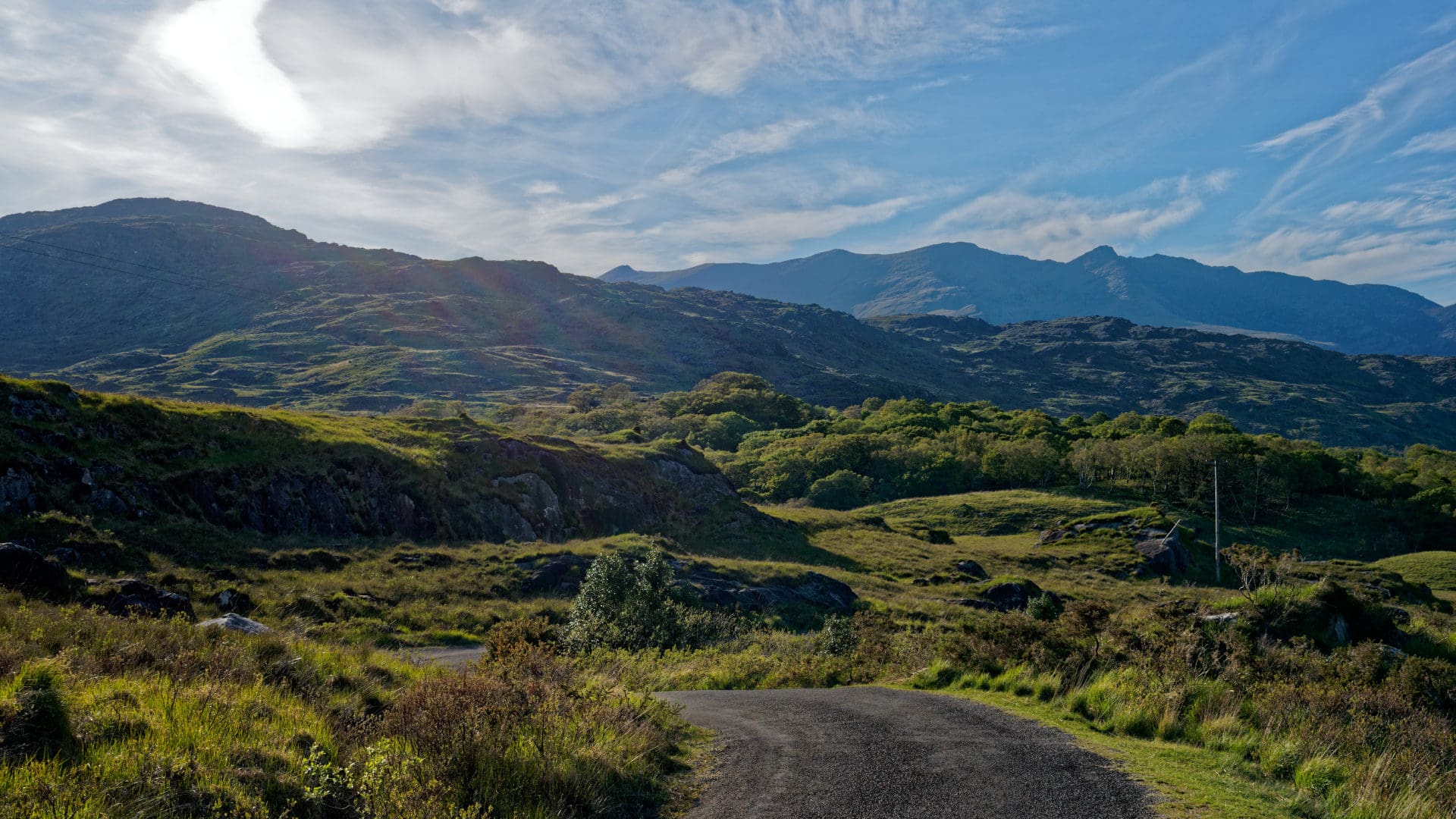
County Kerry = The Kingdom
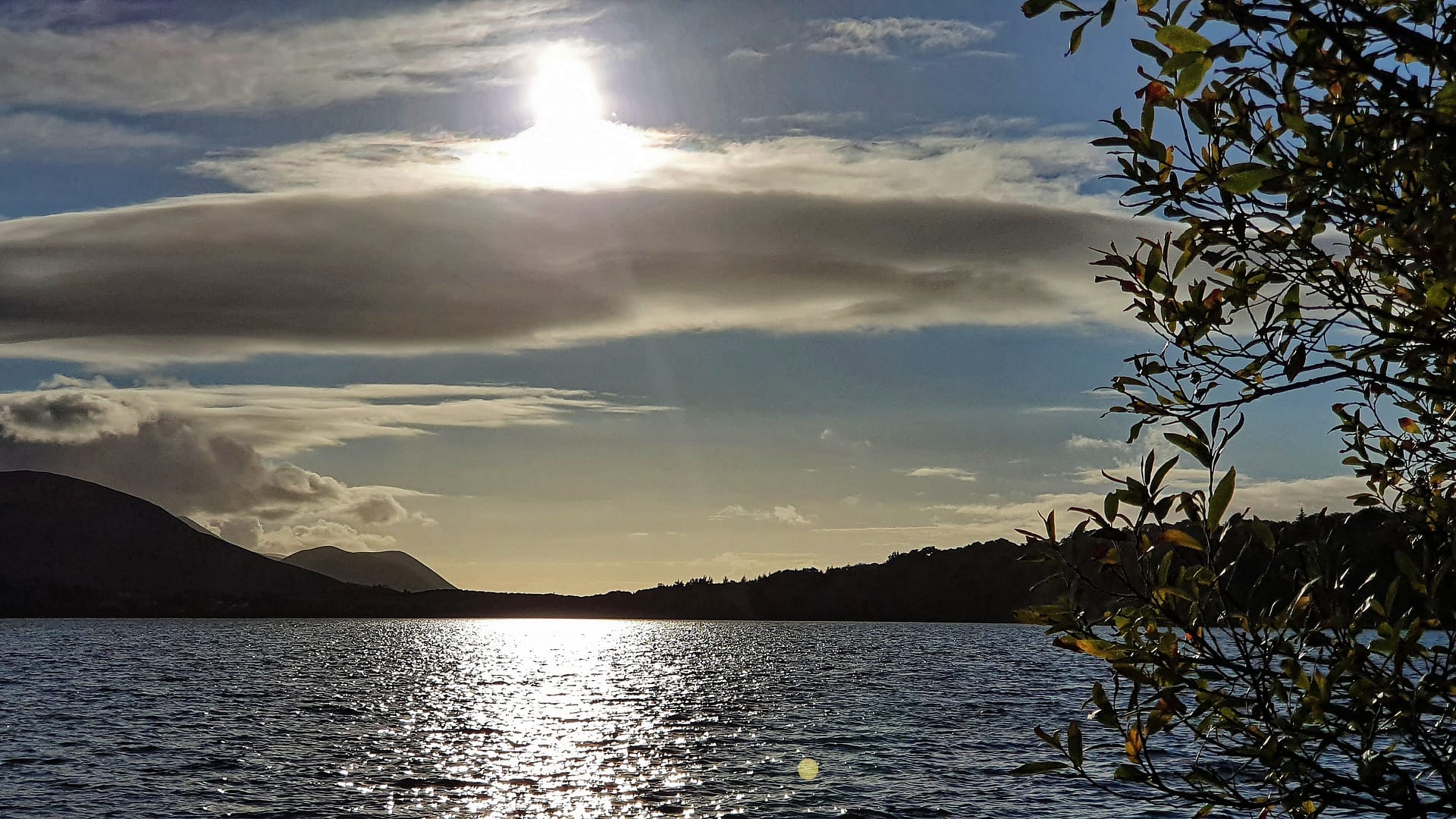
When the locals talk about County Kerry, they often refer to it as ‘The Kingdom.’ At first I was confused by what they meant. Then I learned that in the first century (around 65 AD), the area was governed by a chieftain of the O’Connor clan whose name was ‘Ciar’ (pronounced ‘keer’).
His descendants were called ‘Ciarraigh’ (pronounced ‘keer-ree’), which meant ‘Ciar’s kingdom.’ Once the English came along, ‘Ciarraigh’ eventually turned into ‘Kerry.’ But the idea of the Kingdom remained.
The Gaeltacht of County Kerry
County Kerry is also home to some of the few ‘Gaeltacht’ (GWALE tuckt) regions that remain in Ireland. This term describes areas in which people speak the Irish language on a daily basis–both in the home and in the community. Ireland has a population of approximately 4,239,848, and only around 91,862 (2006 census) of them meet this criterion.
Approximately 6,185 Irish speakers live in Kerry. The majority are located in two areas: the western half of the Dingle Peninsula and the central and western parts of the Iveragh Peninsula.
There is great concern that the numbers of Irish speakers are dwindling. However, many of the people Gerhard and I have met in the Irish speaking part of the Dingle Peninsula (where we live) are committed to keeping their language and traditions alive. Thankfully, this also includes passing the traditions of singing, instrument playing and storytelling on to their children.
